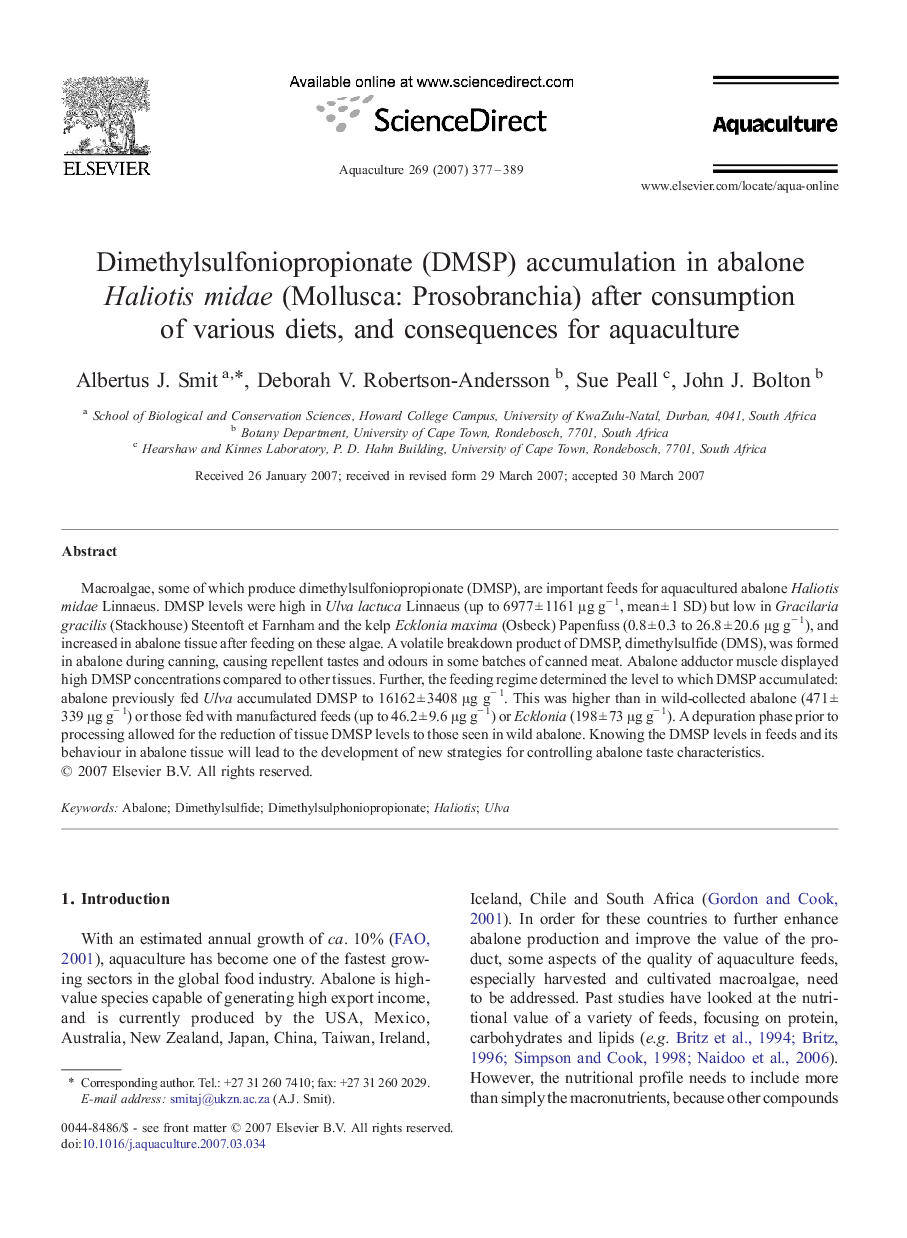| کد مقاله | کد نشریه | سال انتشار | مقاله انگلیسی | نسخه تمام متن |
|---|---|---|---|---|
| 2425293 | 1552973 | 2007 | 13 صفحه PDF | دانلود رایگان |

Macroalgae, some of which produce dimethylsulfoniopropionate (DMSP), are important feeds for aquacultured abalone Haliotis midae Linnaeus. DMSP levels were high in Ulva lactuca Linnaeus (up to 6977 ± 1161 μg g− 1, mean ± 1 SD) but low in Gracilaria gracilis (Stackhouse) Steentoft et Farnham and the kelp Ecklonia maxima (Osbeck) Papenfuss (0.8 ± 0.3 to 26.8 ± 20.6 μg g− 1), and increased in abalone tissue after feeding on these algae. A volatile breakdown product of DMSP, dimethylsulfide (DMS), was formed in abalone during canning, causing repellent tastes and odours in some batches of canned meat. Abalone adductor muscle displayed high DMSP concentrations compared to other tissues. Further, the feeding regime determined the level to which DMSP accumulated: abalone previously fed Ulva accumulated DMSP to 16162 ± 3408 μg g− 1. This was higher than in wild-collected abalone (471 ±339 μg g− 1) or those fed with manufactured feeds (up to 46.2 ± 9.6 μg g− 1) or Ecklonia (198 ± 73 μg g− 1). A depuration phase prior to processing allowed for the reduction of tissue DMSP levels to those seen in wild abalone. Knowing the DMSP levels in feeds and its behaviour in abalone tissue will lead to the development of new strategies for controlling abalone taste characteristics.
Journal: Aquaculture - Volume 269, Issues 1–4, 14 September 2007, Pages 377–389